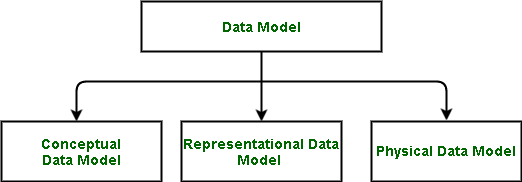Several ER modeling tools are used by data architects to create visual maps that convey database design objectives. Relationship data model 4.
Network data model 3.

. Object-oriented data models gained traction as object-oriented programming and it became popular in the mid-1990s. In the relational model data are stored as tables. Different Types of Data Models 1.
The network model is a type of database model which is designed based on. The network and hierarchical models are still used in a large number of older databases. In the multivalue.
The relational model represents data as relations or tables. The main highlights of this model are Data is stored in. The three most widely accepted record based data models are.
The information data is stored at a centralized location and the users from different locations can. These are seven types of data base users in DBMS. Data Model gives us an idea that how the final system will look like after its complete implementation.
Next Prev LikeSubscribe us for latest updates About Dinesh Thakur. Conceptual Data Model. In this type of data model the data is organized into a tree-like structure that has a single.
Depending upon your specific needs one of these models can be used. Hierarchical Model Network Model Relational Model The relational model has gained favor over the other two in recent years. We can consider both conceptual and logical data models as technology-agnostic business-oriented models the logical one with more detail while physical data models are created to actually implement and create a database thus taking into account technology features data types name conventions and limits etc.
A database model is a type of data model that determines the logical structure of a database. Conceptual data models logical data models and physical data models and each one has a specific purpose. There are three main types of data models that organizations use.
The data models are used to represent the data and how it is stored in the database and to set the relationship between data items. Data modeling is the process of diagramming data flows. A database model is a type of data model that describes the structure of a database and can be described as a collection of various means by which data can be stored organized and manipulated.
It is more scientific a model than others. For example in the membership system at Science World each membership has many members see Figure 22 in Chapter 2. This model organises the data in the hierarchical tree.
There are mainly three different types of data models. The DBA will then create a new account id and password for the user if. Database users are categorized based up on their interaction with the data base.
They range from abstract to discrete specifications involve contributions from a distinct subset of stakeholders and serve different purposes. DB2 and Informix Dynamic Server IBM Oracle and RDB Oracle SQL Server and Access Microsoft In this tutorial you will learn. Some of the most common ones include.
Let us explain all of them. Database Administrator DBA. Any value occurring in two different records belonging to the same table or to different tables implies a relationship among those two records.
Types of Data Models. One entry per invoice and B Invoice Detail Table - one entry per line item. This model is based on first-order predicate logic and defines a table as an n-ary relation.
Types of database models There are many kinds of data models. Some popular Relational Database management systems are. Hierarchical Model was the first DBMS model.
Entity relationship model 5. There are multiple types of database models the most common of which is the Relational model. There are four common types of database model that are useful for different types of data or information.
Three well-known data models of this type are relational data models network data models and hierarchical data models. These are produced during the course of planning a project in analytics. Entity-relationship ER data models use formal diagrams to represent the relationships between entities in a database.
Conceptual data model describes the database at a very high level and is useful to understand the needs or requirements of the database. It is this model that is used in the requirement gathering process ie before the Database Designers start making a particular database. Here are some data models described 1.
Hierarchical database model Relational model Network model Object-oriented database model Entity-relationship model Document model Entity-attribute-value model Star schema The object-relational model which combines the two that make up its name. The most popular data model in DBMS is the Relational Model. When creating a new or alternate database structure the designer starts with a diagram of how data will flow into and out of the database.
This flow diagram is used to define the characteristics of the data formats structures and database handling functions to efficiently support the. Before we touch on the Relational database model lets discuss two other models which were commonly used prior to the development of the relational model - the hierarchical model and the network model. What is Data Model in DBMS and what are its types.
Database Administrator DBA is a personteam who defines the schema and also controls the 3 levels of database. However the physical storage of the data is independent of the way the data are logically organized. One such popular model is the entityrelationship model ER.

Data Models In Dbms Geeksforgeeks


0 Comments